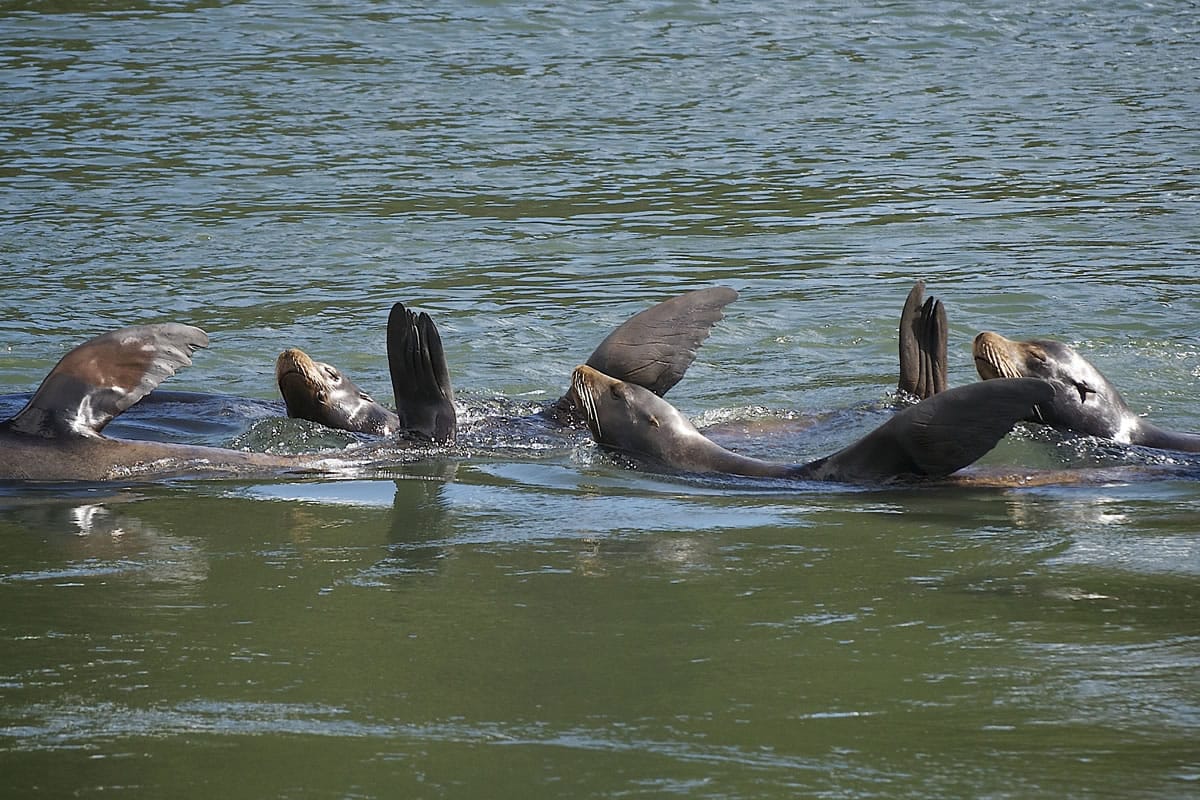Every time Robin Brown heads down a dock to check a sea lion trap, he picks up a large stick.
“Once they find a place to haul out, they get pretty mulish,” said Brown, 66, one of just two marine mammal biologists with the Oregon Department of Fish and Wildlife.
Brown will retire in June into a half-time contract with the department — still jousting with critters seemingly more and more out of control.
In the past month or two, a few California (one Steller) sea lions have moved into the lower stretches of the Sandy River and as many as half-dozen (some say more) are devouring winter steelhead in the Clackamas River, as far up as Eagle Creek.
Washington officials report sea lions prowling the lower Cowlitz, Lewis and Washougal rivers.
And these aren’t just any winter steelhead tickling their palates.
By this time of year, the earlier-arriving hatchery-origin steelhead run is largely finished, Todd Alsbury, department district fish biologist, told a group of sportfishing leaders in Clackamas.
“They’re working on wild fish,” Alsbury said. “It could make Ballard Locks pale in comparison.”
Remember Ballard Locks in Seattle?
Apparently few, if any, real lessons were learned from the decimation of Lake Washington’s meager (2,000-3,000 fish) wild steelhead runs by Herschel and a handful of sea lions in the 1990s.
In the few years it took to collect enough data to satisfy the federal Marine Mammal Protection Act’s (MMPA) proof requirements, the unsustainable run crashed.
Oregon and Washington fish managers met by telephone last week with the National Marine Fisheries Service to see if they could get any assistance, budget or otherwise, in dealing with the spreading sea lion threat.
But to no avail.
Federal scientists and agencies are feeling budget pinches of their own, especially in the propwash of President Trump’s apparent budget assault on natural resources.
Worse, it seems federal protection may be eating its own.
Both the federal Endangered Species Act (ESA) — which protects the bulk of wild winter steelhead — and MMPA require data, but the ESA is then designed to rebuild populations while the MMPA is a blanket protection; one only rarely pre-empted by extensive proof of damage.
For example, look at how long it took to prove sea lions needed to be permanently removed at Ballard Locks and, more recently, Bonneville Dam
Data collection, in its infancy on the Willamette, isn’t even in the works for either the Clackamas or Sandy rivers. And removal authorization on the Columbia extends no farther downriver than Bonneville, even given the thousands of sea lions in the system.
Under the MMPA, Brown said, the Secretary of Commerce may have authority to waive data collection and authorize sea lion removal, but that’s never happened.
Such a potentially hot political potato, he said, “would probably have to come from the White House.”
PGE biologists, meanwhile are scrambling for answers if sea lions venture just a little farther up the Clackamas to River Mill Dam, where wild steelhead stack up below a brand new fish ladder built to help them recover in the upper drainage.
But PGE is unlikely to obtain a federal hazing permit before the end of the season and state managers, busy at Bonneville, don’t have enough money to help.
And anyway, hazing has never been more than briefly helpful, Brown said, although it’s also never been attempted on a smaller river.
The only effective deterrent, Brown said, is to thwart sea lions early on. They learn from each other, he said, and pay no attention to dead comrades.
But if they’re either removed or forced out of an area within the arrival of the first few, others won’t learn the same behavior.
That leaves only anglers with the right to haze without a permit.
But they must use non-lethal methods, including fireworks (constrained by local laws), slingshots and paintball guns, among other methods.
…Including Brown’s big stick.



